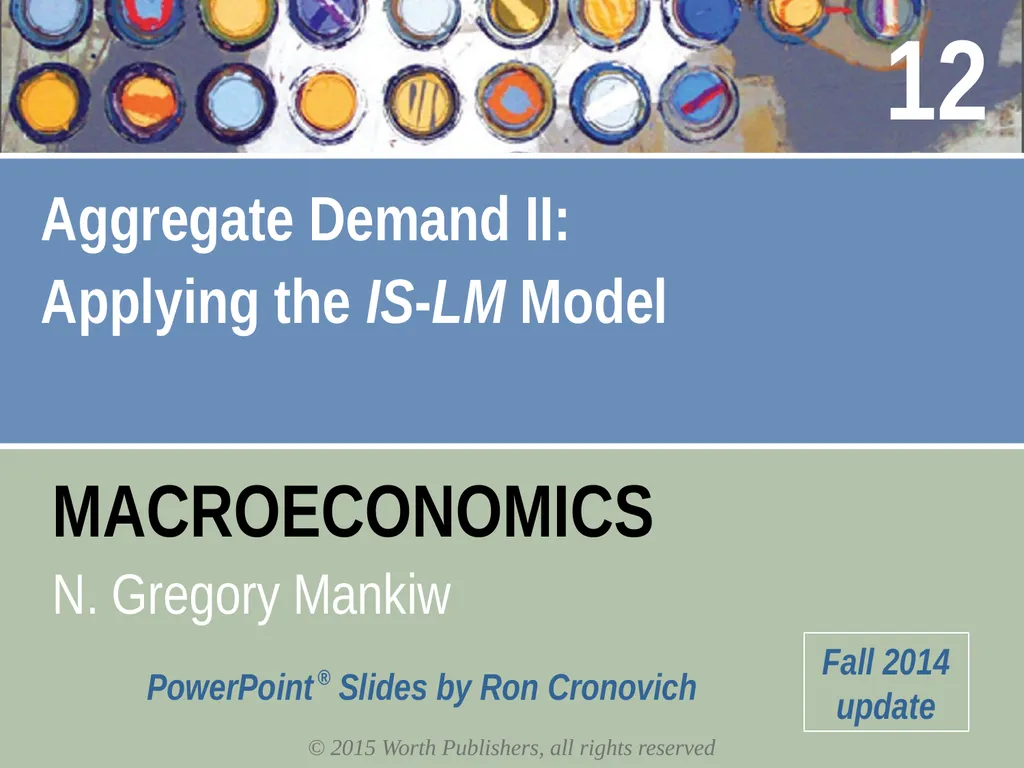
Aggregate Demand II: Applying the IS-LM Model 12
Author: giovanna-bartolotta | Published: 2025-08-04
Description: Aggregate Demand II: Applying the IS-LM Model 12 Context Chapter 10 introduced the model of aggregate demand and supply. Chapter 11 developed the IS-LM model, the basis of the aggregate demand curve. IN THIS CHAPTER, YOU WILL LEARN: how to
Download Presentation
Download the PPT/PDF: Download
Transcript:
Loading transcript…